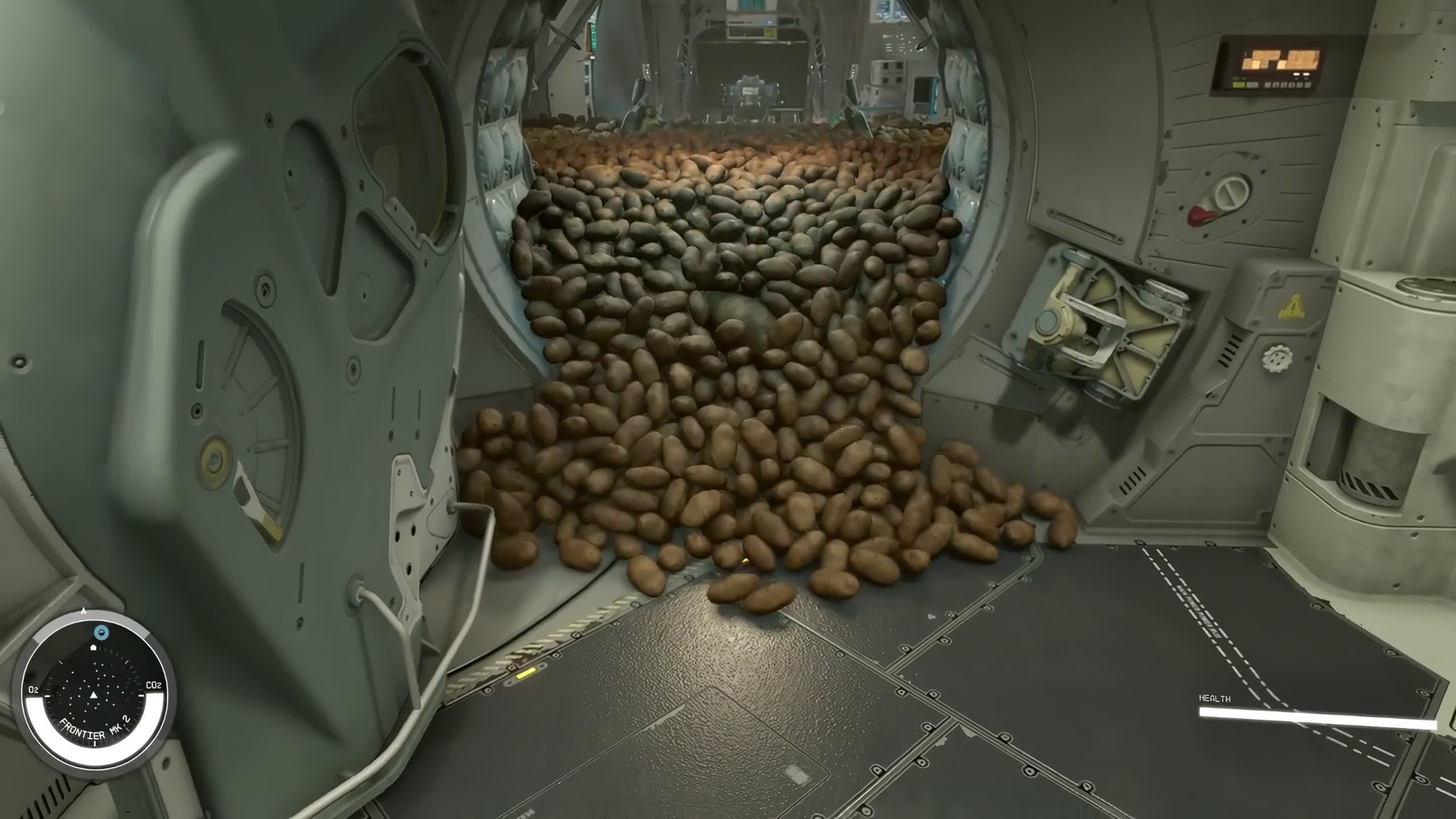WTF?! It's not a Bethesda game if you can't hoard thousands of useless tiny objects in one room. Starfield maintains this amusing trait of the developer's past titles and pushes it to a new level with shockingly advanced physics calculations.
A Starfield player recently posted a video displaying the extent of the game's impressive physics engine in one of the funniest ways possible. Bethesda previously joked about allowing players to fill their ship with dozens of stolen sandwiches, but that doesn't even scratch the surface.
The video, posted by Redditor Moozipan, begins with one of the game's primary NPCs, Sarah, remarking that the player has too much junk on their ship. The player then opens a hatch to reveal a room filled with 20,000 potatoes. Some spill out through the doorway with astonishing realism. The hatch then closes, pushing through the spilled potatoes in a way that looks just as natural. A second clip shows Sarah stuck in the middle of all the potatoes (which Mozzipan spawned using console commands on PC) shortly before an explosion hurls them across the room.
The gag is a nod to the Skyrim player who tossed 2,000 goat cheese wheels into a single room. Multiplying the number of objects by 10 (Mozzipan admitted Starfield couldn't handle 100,000 potatoes) shows how far Bethesda's technology has come since Skyrim's release in 2011. It's also an impressive challenge to the video showing 3,000 barrels collapsing and exploding in the original Crysis.
This is pretty mind blowing, actually. The fact that these objects all have physics is impressive. https://t.co/YAdzgrPkQs
– John Linneman (@dark1x) September 5, 2023
The potato clips highlight an impressive facet of Bethesda's games – object permanence. Starfield reviews confirm that, like past Bethesda releases, the game tracks the position of everything the player has ever moved, down to minor pieces of junk, even after traveling many lightyears.
Complex physics and NPC behavior interactions are likely a significant reason why Starfield runs at 30 frames per second on Xbox – a controversial performance profile as 60fps console titles become more common. It may also be why, as one commentator noted, Bethesda continues building games like Starfield on its in-house Creation Kit engine, which evolved from the Gamebryo tools the company has used since The Elder Scrolls III: Morrowind in 2002. Switching to the Unreal Engine might make Bethesda's games look better, run more smoothly, or permit anyone with Unreal Engine experience to work on them. However, it might not allow tricks like spilling 20,000 potatoes onto the floor or using the physics engine to cheat in amusing ways.
Players are using Starfield's object permanence to circumvent their ships' strict carrying capacities by physically throwing loot onto the deck, where it doesn't consume inventory space. Mozzipan advises caution with this tactic, as items can glitch through walls depending on where they are. It has also not been a completely reliable way to store items in past Bethesda titles.
Mozzipan also used the post to call attention to Starfield's relative lack of accessibility features like an FOV slider or a colorblind mode. Steve Saylor, a legally blind YouTuber who reviews video games based on their accessibility features, appreciated the game's large font mode and customizable controls but criticized the absence of further user interface customization options and the vague map screen. Mozzipan added that modders have already added accessibility features for PC users despite Starfield still being in early access. The game officially launches on Wednesday, September 6.
